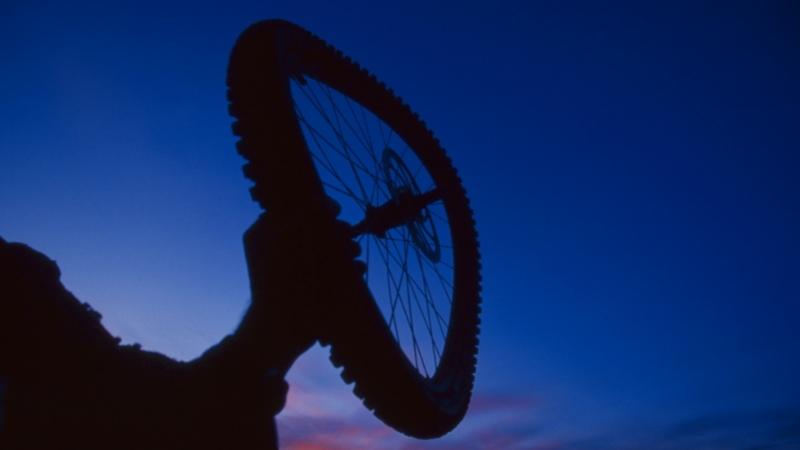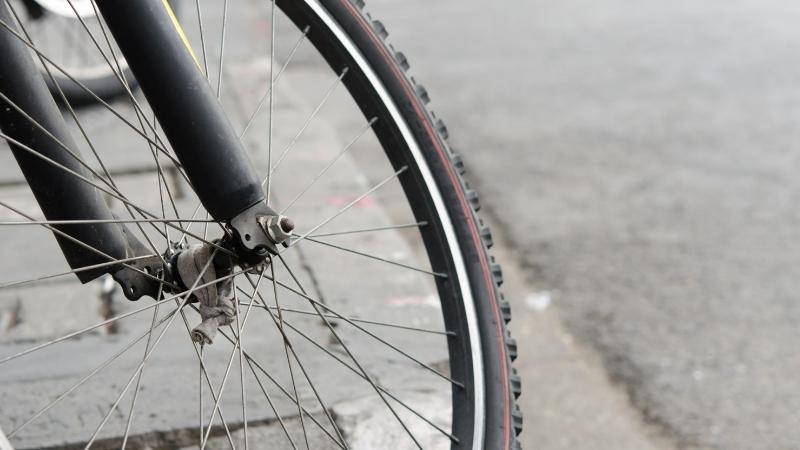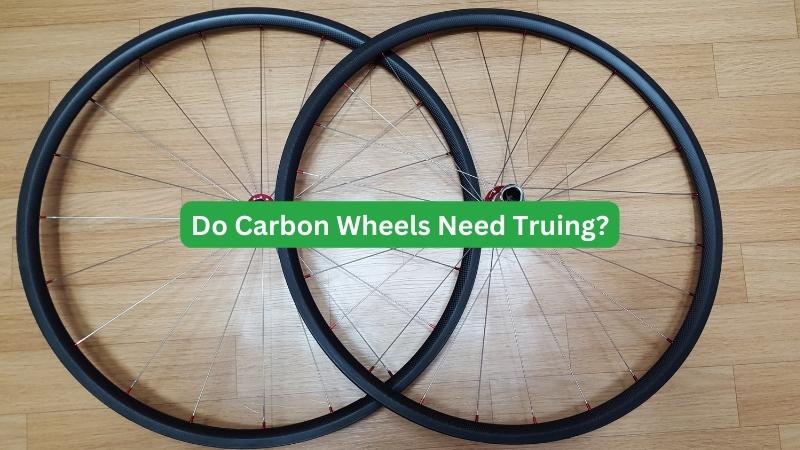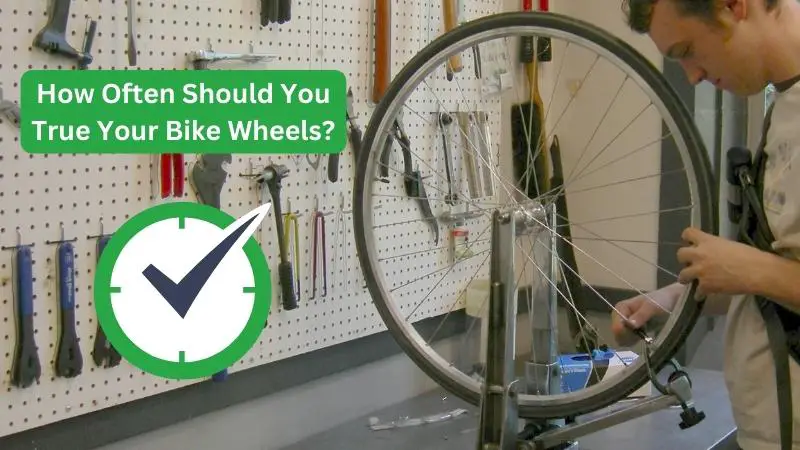Wheel truing is one of the most challenging tasks when it comes to wheel maintenance activities. It is mainly seen as some dark art that can only be mastered by experienced bike wizards that have spent many years in the craft.
This is the reason why wheel truing is mostly done in repair shops and not a common DIY practice. Luckily, professionals are so skilled that they’ll often finish truing a bike wheel within 10-15 minutes. This makes it a fairly cheap service as well, at around $20 to $40 in total.
With that said, it’s still a cost, which may lead you to wonder how often you should true your bike wheels.
The quality of your wheel will determine how frequently you must true your wheels. Regardless of the rider’s weight or the amount of abuse the wheels endure, if you have higher-quality wheels, you should only need to true them once after traveling about 200 miles (322 km). This is about once a year if you ride fairly often.
Signs Your Bike Wheels Need Truing
Your bike’s wheels are an important component of the whole thing. You can be engaged in a terrible accident with serious injuries if they falter for any reason. Neglecting to maintain the care of this component is undoubtedly dangerous.
That being said, ‘truing,’ which is the process of regulating the spokes by tightening (or loosening) as necessary to provide a straight form for the rim and an overall robust structure, is a crucial part of wheel maintenance.
Many people new to riding may find truing a foreign notion, making it difficult to tell if the wheels are in or out. You can tell when your bike needs to be trued by recognizing some indicators.
Once You Notice Some Rattling Sounds When Riding
In most cases, neither the wheels nor the bike will make any noise when you ride. It could be a number of things, including the chain or the wheels, if you hear a persistent “rattling” or “humming” when riding.
The threaded nuts at the base of the spokes, known as the “nipple,” need to be tightened through the truing process since the spokes are frequently slack. Because they are providing the framework of the wheel with virtually little support, if they are loose, they will rattle as if there are no spokes at all.
Once You realize a Constant, Rhythmic Rubbing
Riders frequently assume that the brakes are to blame if they experience a rhythmic, unpleasant rubbing noise from the wheels. But the wheels themselves are usually to blame. When wheels become out of alignment, the tire’s shape changes, and the rim deforms, favoring the side that is more tight and tugging the bike in that direction.
You’ll hear a rubbing sound when the wheel brushes against the brake and feel the tire start to wobble. The only way to rectify the wheel’s shape is by correcting the wrong side.
Immediately You Notice a Vertical Deformity of a Wheel

A typical wheel malformation manifests “vertically,” causing a wheel to roll erratically in an up-and-down motion because it is not exactly spherical. The rising and falling movement of the rim as the tire circles has the ability to impact the rim brakes by preventing contact.
Spin the wheels while turning the bike on its seat to look for a vertical deformation. The reduced stopping power and perhaps compromised wheel integrity make a bike in this state unsafe for a variety of reasons.
The Moment Your Spokes Have Lost Their Rigidity
A wheel’s spokes ought to be sturdy and firm, not sagging or wobbling. You shouldn’t be able to manipulate anything with your hands. The wheel’s strength is jeopardized if any spokes are visibly sagging, especially if you find yourself in a scenario where one or more spokes may be missing.
One of the many causes of loose spokes is a potentially stripped nipple, which causes a detachment from the rim. Even if the wheel may still be accurate, it won’t stay that way for very long. If neglected, the entire wheel may need to be replaced.
Why Do Wheels Become Untrue?

When you bring a bike to a shop and discover the wheels are no longer true, it frequently happens that the ideas put forth to explain why this happened are frequently incorrect.
There will frequently be claims that you hit a pothole. The suggestion that your current tires are too light and you should consider more durable ones may also be made. Some people unnecessarily attribute an out-of-balance wheel to the rider’s weight. None of these will be the cause of the wheel becoming misaligned.
On a bike that is made to be lightweight, metal wires known as spokes connect the hub to the rim of a wheel. The spokes are not made of robust material and are prone to bending. But when you put pressure on them, they grow incredibly strong; it would take a great deal of force to cause them to break.
The spokes encounter cyclic and off-cycle loads when the wheel rotates, which is the wheel’s only function in moving the bike. The spokes are compressed at the bottom and under tension at the top.
The potential for them to break free from the nipple and cause further loss of tension arises when the tension at the point where they are on the bottom is too low.
The wheel’s integrity is impacted when spokes lose tension in this way. The spokes must be trued up because the wheel was knocked out of alignment. The bulk of problems with wheels becoming out of true are brought on by spoke tension.
What Are The Risks of Riding on Untrue Wheels
The top priority when riding a bike is safety. It’s why you dress appropriately, including a helmet, adhere to traffic regulations, and have your bike serviced regularly. A bike crash puts you at greater risk of serious injuries than other types of vehicles. Therefore, it is not a good idea to intentionally ride a bike that is in poor shape.
However, there may be instances where you discover that your bike is no longer reliable, and you must ride it to get back to your house. You could have no other choice if you don’t have a key or a way to fix it.
The general guideline in this situation is to think about why the wheels are false before deciding if riding on them will be dangerous. Due to missing spokes or weak spokes, which may be the result of uneven strain, the rim has a chance of collapsing.
A bike with rim brakes may eventually be compromised, causing the wheel to swerve from side to side and loosen the hub. It is emphasized that hub nuts falling free are pretty harmful. There is an urgent need for action in this circumstance. You shouldn’t stay on this wheel much longer.
Do Carbon Wheels Need Truing?

As long as they are not broken, carbon rims are always feasible to true with good equalized spoke tension because they don’t bend as aluminum rims can. If at all feasible, very uneven spoke strain must be applied to straighten bent aluminum rims.
Hi, my name is Niklas, the head content creator & CEO of Whirling Wheelz. I am very interested in vehicles of all kinds, mainly cars. I have a car mechanics degree from high school and a big hobby of mine is to follow the WRC (World Rally Championship) both online and through travel.


